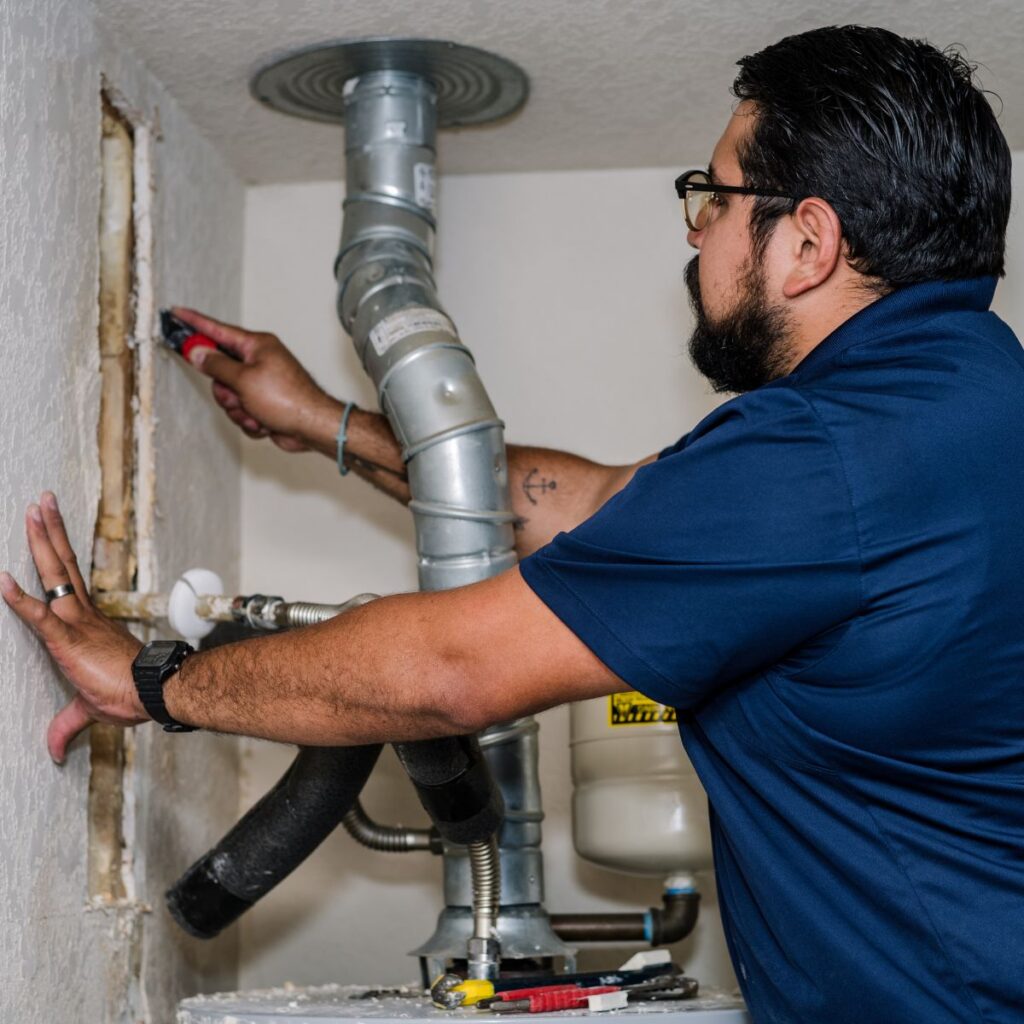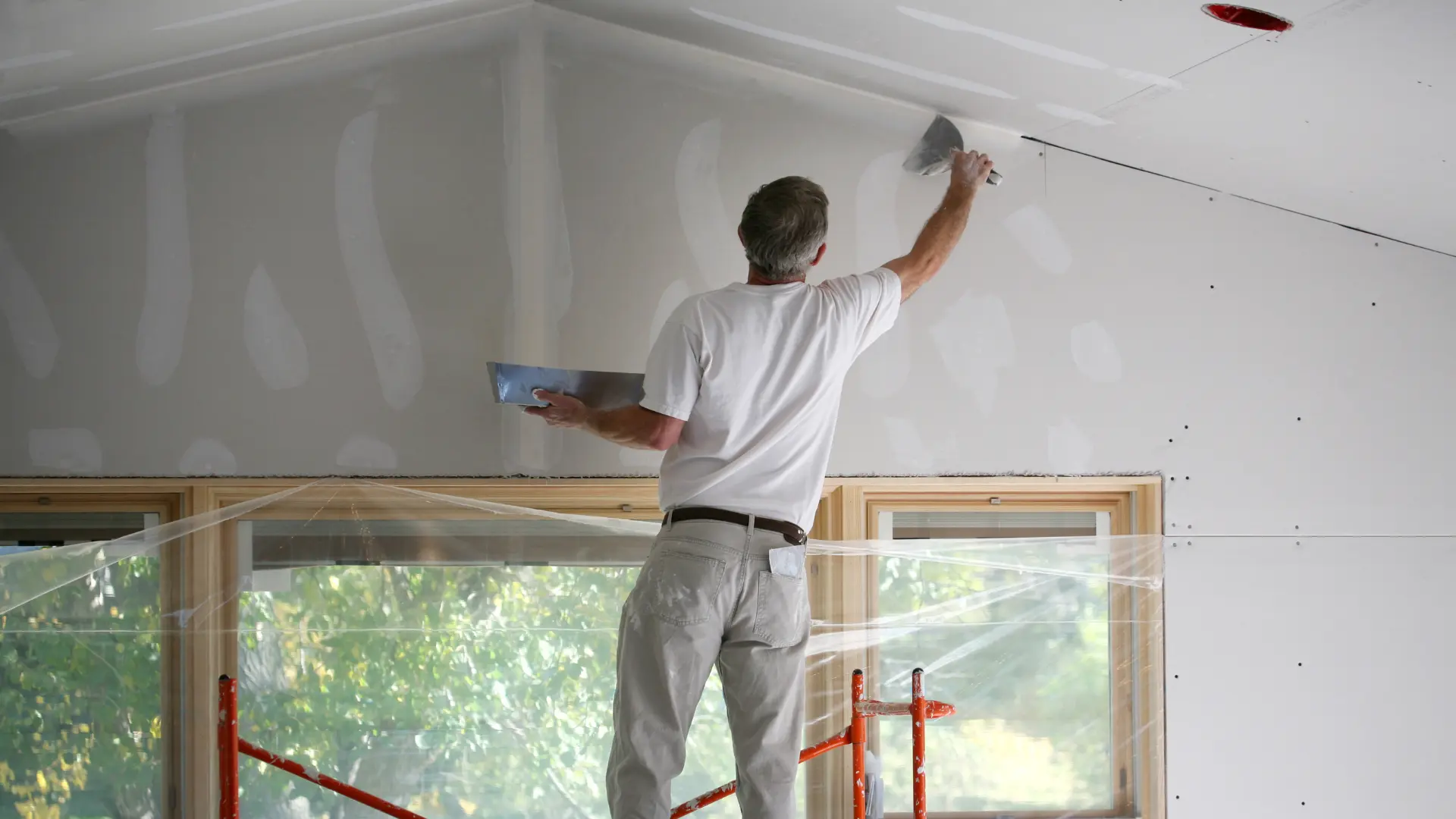Recreate your space through innovative Drywall Installation Ogden Utah and painting solutions.
Discover the very best Practices for Effective Drywall Repair Work and Installation
The art of drywall fixing and setup calls for a mix of ability and accuracy. Understanding the important devices is essential for achieving a seamless finish. Understanding the step-by-step process can make a significant difference in the outcome. Proper strategies for mudding and taping are likewise crucial. What continues to be is the understanding of maintenance that ensures long life. These aspects with each other create a refined outcome worth discovering even more.
:max_bytes(150000):strip_icc()/SPR-solutions-to-common-drywall-problems-p2-4120949-hero-c15a37669eae45478eca0cf15b34a1d1.jpg)
Crucial Tools for Drywall Repair and Installment
When embarking on drywall fixing and installment, having the right tools can significantly improve the effectiveness and top quality of the work. An utility knife is necessary for cutting drywall sheets exactly, while a drywall saw can help in making more complex cuts. Taping blades, available in various dimensions, are important for using joint substance smoothly and evenly. A drywall sander, preferably with a dirt collection feature, assists attain a sleek coating, lowering the requirement for considerable clean-up.
Additionally, a measuring tape assurances accurate measurements, and a level makes sure that setups are straight and plumb. Safety gear, consisting of dust masks and safety glasses, need to not be neglected to safeguard against particles and dirt. A stud finder help in locating mounting members, ensuring safe and secure setup. By equipping oneself with these crucial devices, the repair and installation process becomes much more workable and leads to a professional-quality result.

Step-by-Step Guide to Patching Holes
Patching holes in drywall needs a methodical technique to ensure a smooth fixing. The area around the hole have to be cleaned up and any kind of loosened particles removed. For little openings, a putty knife can be used to apply a light-weight spackle, pressing it right into the hole and smoothing the surface. After it dries, fining sand is vital to create a level coating. For larger holes, a patch of drywall may be needed. This entails cutting an item of drywall somewhat bigger than the opening, securing it to the wall surface with screws, and using joint substance to cover the joints. As soon as the substance dries out, it ought to be sanded smooth. Ultimately, priming the patched location prior to painting will assure an even finish. Following these steps will lead to a professional-looking repair that blends flawlessly with the bordering wall.
Methods for Seamless Drywall Setup
Achieving seamless drywall setup needs mindful preparation and execution. It is essential to measure and reduce drywall sheets accurately to minimize voids. Making use of an energy knife, installers must rack up the board before breaking it along the cut line, ensuring tidy edges. Correctly lining up the sheets is important; beginning with the top and functioning down assists keep uniformity.
Fastening drywall to the studs needs consistent spacing, typically every 16 inches, making use of screws rather than nails for better have a peek here hold. This technique decreases the risk of stands out in time. Additionally, staggering the joints in between sheets enhances architectural honesty and lowers the presence of joints.
Utilizing the right thickness of drywall for specific locations-- such as moisture-resistant kinds in washrooms-- further adds to a remarkable surface. Following these strategies will lead to a smooth and professional-looking installment, setting the stage for the succeeding ending up procedures.
Finishing Touches: Taping and Mudding
Ending up touches, such as taping and mudding, play a necessary function in attaining a refined drywall surface. Insulation involves applying a slim strip of drywall tape over the joints and joints, ensuring a seamless look. This procedure helps avoid fractures and creates a solid bond between drywall sheets. It is vital to choose the right kind of tape, with paper and fiberglass harmonize being the most usual options.
Mudding, or using joint compound, complies with insulation. This substance completes voids and ravel the surface for an uniform surface. It is usually applied in multiple layers, with each coat needing to completely dry before fining sand. Appropriate strategy involves feathering the sides to mix the compound right into the surrounding drywall, decreasing presence.
When finished appropriately, taping and mudding improve both the visual and architectural stability of the drywall installation, leading to a professional-quality finish.
Tips for Maintaining Your Drywall After Setup

In addition, preserving a regular interior humidity level can stop warping or mold development. Utilizing a dehumidifier in damp areas, like cellars, is recommended. It's additionally helpful to occasionally paint areas that reveal wear, as this safeguards the underlying product. Ultimately, when relocating furniture or installing components, caution should be exercised to avoid harming the drywall. By adhering to these maintenance suggestions, house owners can prolong published here the life of their drywall, safeguarding it stays an attractive attribute of their interiors.
Regularly Asked Questions
What Safety Equipment Is Necessary for Drywall Repair and Setup?
For drywall repair and installation, essential security gear consists of safety goggles to shield eyes, dust masks to avoid breathing of bits, handwear covers for hand defense, and knee pads for convenience during long term kneeling. Interior Painting.
Just how Do I Establish the Drywall Thickness Needed for My Task?
To establish the drywall thickness required for a job, one ought to think about the wall's structural needs, local building ordinance, and the meant use of the room, usually selecting 5/8-inch or 1/2-inch drywall.
Can I Fix Drywall Without Removing Furnishings From the Area?
Yes, drywall can be repaired without getting rid of furniture from the space. Careful planning and protective procedures can decrease mess, permitting efficient repairs while keeping bordering products secure from dirt and damages during the process.
What Sorts of Drywall Are Finest for Different Environments?
Moisture-resistant drywall is perfect for cooking areas and shower rooms, while soundproof drywall fits shared walls in apartment or condos. Fire-rated drywall is best for garages, and conventional drywall functions well as a whole living areas, making certain longevity and viability for numerous environments.
How much time Does It Take for Drywall Mud to Dry Totally?
Drywall mud typically takes 24 to 48 hours to dry entirely, relying on variables like moisture and temperature level (Drywall Installation Ogden Utah). Thicker applications may need longer drying out times, while thinner layers can dry out quicker. Proper ventilation help drying out
The art of drywall repair service and installation calls for a blend of skill and precision. When undertaking drywall repair and installment, having the right tools can significantly improve the efficiency and high quality of the work. An energy blade is necessary for reducing drywall sheets exactly, while a drywall saw can help in making a lot more detailed cuts. Achieving seamless drywall setup demands cautious planning and implementation. Moisture-resistant drywall is suitable for restrooms and kitchen areas, while soundproof drywall suits shared wall surfaces in apartments.